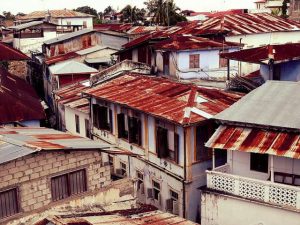The History of the Maasai Tribe: A Timeless Legacy
Origins of the Maasai Tribe in East Africa
The Maasai tribe is one of the most well-known indigenous groups in East Africa, primarily located in Kenya and Tanzania. The origins of the Maasai can be traced back to the Nile Valley, where they began migrating southwards around the 15th century. Over time, the Maasai settled in the Rift Valley region of East Africa, where they adopted a nomadic lifestyle centered around cattle herding.
The Maasai people are known for their distinct appearance, characterized by their tall stature, intricate beadwork, and vibrant red attire. They are renowned for their warrior culture, with young Maasai men undergoing rigorous training to become warriors and protect their communities from external threats. Traditionally, the Maasai also practiced pastoralism, relying on their cattle for sustenance and wealth.
Traditions and Customs of the Maasai People
The Maasai tribe has a rich cultural heritage that is deeply rooted in tradition and customs. One of the most iconic aspects of Maasai culture is their intricate beadwork, which is used to adorn clothing, jewelry, and ceremonial items. Beadwork plays a significant role in Maasai society, with different colors and patterns symbolizing various aspects of their culture and beliefs.
Another important tradition among the Maasai people is their unique style of dancing. Maasai dances are energetic and rhythmic, often accompanied by chanting and traditional music. These dances serve as a form of cultural expression and are performed during important ceremonies and celebrations.
Cattle are considered sacred to the Maasai, serving as a symbol of wealth and prestige within the community. Cattle are also used in various rituals and ceremonies, such as weddings and coming-of-age celebrations. The Maasai people have a strong connection to their livestock, viewing them as a source of sustenance, social status, and spiritual significance.
Despite facing modernization and external influences, the Maasai tribe has managed to preserve many of their traditional customs and beliefs. The Maasai continue to live in traditional homesteads known as "manyattas," which are constructed from a mixture of mud, sticks, and cow dung. These homesteads are typically arranged in a circular fashion, with each family having their own designated space within the community.
For those interested in experiencing the rich cultural heritage of the Maasai tribe, Sunset Africa Safari offers guided tours to Maasai villages in Kenya and Tanzania. Visitors have the opportunity to learn about Maasai traditions, interact with community members, and witness firsthand the timeless legacy of this remarkable tribe. To book a tour with Sunset Africa Safari, please contact info@sunsetafricasafari.com.
In conclusion, the Maasai tribe is a living testament to the enduring legacy of East Africa’s indigenous peoples. Their traditions, customs, and way of life provide a glimpse into a rich cultural heritage that has withstood the test of time. The Maasai people serve as a reminder of the importance of preserving and celebrating our diverse cultural identities.


